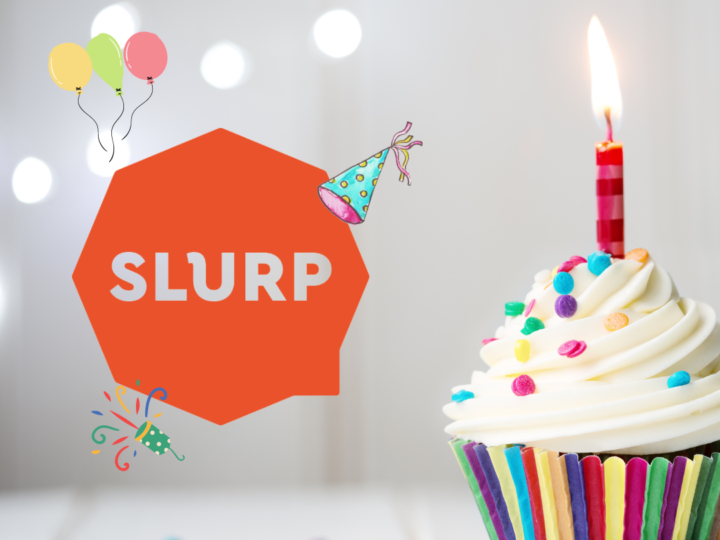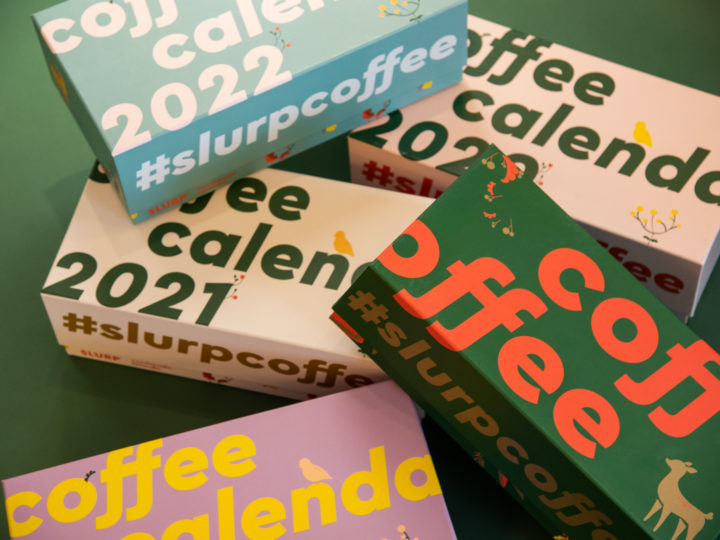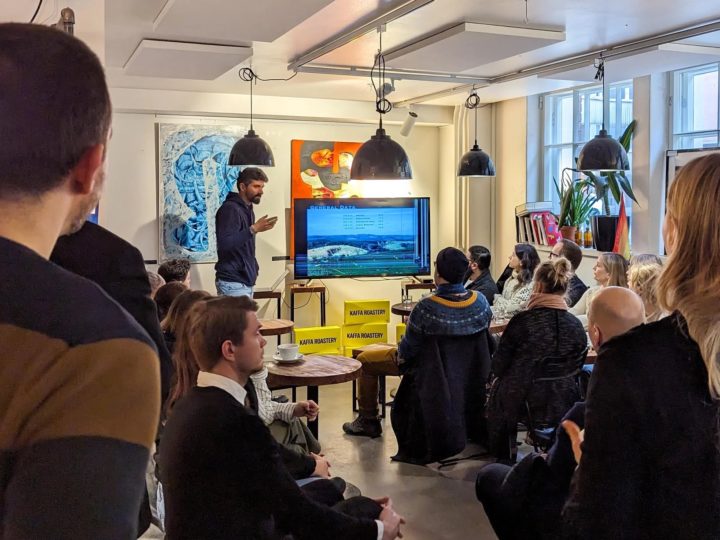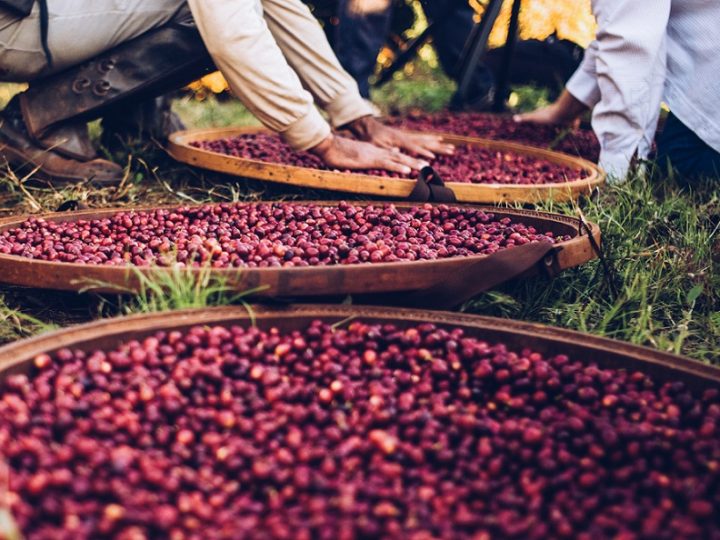We recently launched our new packaging for all the coffee shipments. This time we redesigned the 200 g, and 400 g coffee bags and their respective shipping envelopes. The reason for the redesign was simple: we always want to improve our service in all its aspects based on customer feedback and a constantly developing understanding of how we can be better. The first shipments containing this new design have been received by our customers ordering 400g coffees from Finland already in May 2021.
Now we are proud to launch the new packaging in all our coffee shipments!
In this post, we are going to first dive deeper into the material choices we made, which might be of interest for many of our readers, and second illustrate the different features of the new packaging. We hope that this revision of our packaging will prove to be an improvement in your daily life. We’d love to hear all your thoughts on what could be improved even further (please shoot us a message here, or leave a comment below).
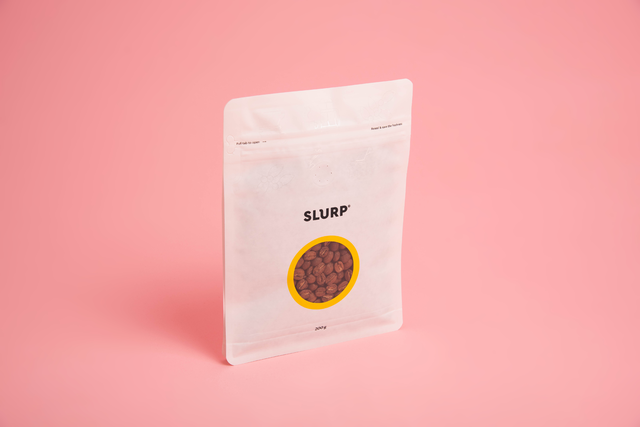
Have you spotted the playful coffee themed figures on the 200g bags?
Why plastic?
This is the most common question we have received about our packaging since initially changing to bags made out of plastic in early 2018. The biggest concern has been the environmental impact of plastic packaging, as our packaging used to consist of kraft paper, aluminum and plastic. Furthermore, people are used to consuming artisan coffee and similar products packed in more earthy materials that communicate values of handcraft and environmental consciousness, so our choice to go with all plastic may seem odd at first glance.
A typical coffee bag contains three layers of material.
When packing any food items, it’s important to ensure that the contents (in our case coffee) is packed into something that for one protects it from environmental conditions and migration including any contaminants, heat, moisture and oxygen during its lifetime. Packaging material has to create a barrier for such factors to retain the product safe for consumption. In coffee, this typically means a three-layered structure, which are (from inside to outside) PE, aluminium and another layer of plastic or paper (like our packaging originally ). The layer in touch with coffee is currently always PE plastic. Aluminium is there to provide an oxygen barrier and to further protect from environmental conditions. After aluminium, the outermost layer is typically plastic or paper, depending on the look and feel a company is going for. In short, a typical coffee bag contains three layers of material, which in the environmentally worst case are all different materials.
Like many other companies in the field of coffee, we also started with this type of a multilayer (PE/Alu/Paper) packaging due to its nice look and feel. However, over the course of time and becoming more aware of the bigger picture, we strongly felt that the packaging we use needs to be environmentally as good as it can currently be. We looked far and wide, but couldn’t yet find any truly biodegradable packaging materials that would satisfy the needs of packing coffee and would already be available commercially (aside from some unique, patented solutions that we don’t have access to).
Producing aluminium requires almost three times as much energy as PE.
In total, the footprint of aluminium is bigger than that of PE plastic (9 MJ/litre for aluminium vs. 3,2 MJ/litre for PE plastic, so energy requirement for PE is almost three times less than that of aluminium; University of Cambridge 2006 The ImpEE project).1 Aside from the energy intensive manufacturing process to make aluminium, it also requires non-renewable materials that are excavated from earth’s crust (like oil). Therefore, we had to leave aluminium out in any case, because to replace its purpose in the packaging we could use plastic, which consumes a lot less energy to produce.
This left us with three options:
- Only plastic.
- Combined plastic and paper.
- Only paper.
The first two options satisfied the requirements posed by the handling and shipping of coffees (in other words keeping the product uncontaminated), while 100 % paper could not protect the coffee enough or would require the shipping envelope to be of another material, which would also negate the goal.
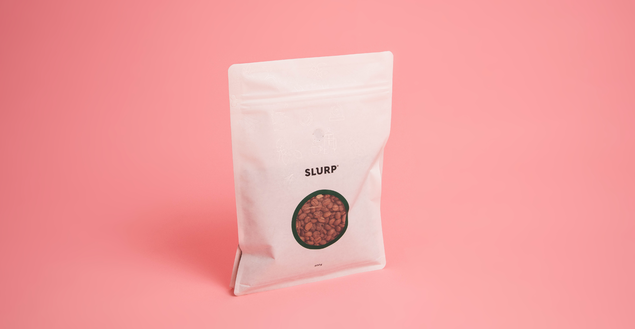
Here is the bigger 400g bag, posing in it's charming new coat
After using packaging made out of only plastic, we decided to go for Option 2 (combines plastic and paper) for the redesign in 2021. We noted however from our customer feedback that this could result in accidentally not recycling the bag as plastic. We nevertheless decided to choose it while improving our communication by including clear instructions in the package.
Finally, even though we are very aware of the growing problem with plastics in the world’s oceans and would love to switch to a renewable material, plastic can already be successfully recycled and/or used for energy in all countries that we operate in, which gives the packaging further use after serving its first purpose (we also like the idea of trapping oil into plastic and then reusing it for its energy, instead of straight away being burned as fuel for cars). All these aspects combined is the reason why we chose a bag that can be recycled as plastic for now.
Recyclable plastic is still the best choice for coffee packaging material to ensure quality and minimising a negative environmental impact.
Nevertheless, we are always looking for better alternatives. If you are aware of a supplier or a material/product that is renewable, we would appreciate it immensely, if you could take a moment to send us a tip. Please do so here or just shoot a message to info@slurp.coffee.
Design and features of the new Packaging
The design process of the new packaging took place during 2020 and early 2021 with a talented external designer . During the work, we looked through countless material options, shapes, sizes, references and built as many prototypes of the coffee bags and shipping envelopes. We are proud of the end result and confident that the packaging is an improvement over previous generations of our packaging. Moreover, we are looking forward to hearing your feedback on the new designs so that we can further improve all our products to better suit your needs. Please don’t hesitate to contact us with all ideas and comments here.
Coffee bags
The goal of the coffee bag is to be easy to use and convenient at home and office, ensure quality of product and lastly communicate our identity and values.
Easy to use and convenient at home
- No scissors! Similar to the previous generation of the Slurp coffee bag, it doesn’t require the use of scissors to open thanks to the so-called easy zipper (pull from the left little handle to right to open).
- Stand proud and free. The coffee bags have a flat bottom so that it can stand freely in the kitchen during use and otherwise.
- Total transparency. The transparent sides, bottom and window on the front allow one to easily see the remaining quantity and type of coffee. Since coffee is best fresh and consumed soon after roasting, in our testing light should not play a big part in the flavour. However, it’s always a good idea to avoid strong light on the coffee and store it in a cool, dark place (but not preferably in the refrigerator).
Ensuring quality of the product
- Keep the bad out and the good in. The material choice was combined plastic and paper (for a more visually appealing look) to have a complete oxygen barrier to keep the product free of undesired smells and maintain the best flavour.
- Breathe out. The one-way valve is there to allow the gases that are trapped into coffee during roasting to come out of the bag, without turning the bag into a popping balloon during shipping. A valve is also nice for getting the first whiff of a freshly roasted coffee (be suspicious of the freshness of coffee bags without a valve!).
- Reseal the deliciousness. The resealable zipper closes tightly to keep all the unnecessary stuff outside. It’s also a good idea to press the extra air out through the valve after closing.
Communicating our identity and values
We believe coffee should be all about fun, enjoyment and discovery. That is why we wanted the coffee bags also to be colourful and fun looking, while already displaying the fresh coffee awaiting to be explored. If you look closely at the surface of the coffee bag, you can find all sorts of coffee related shapes and figures👀
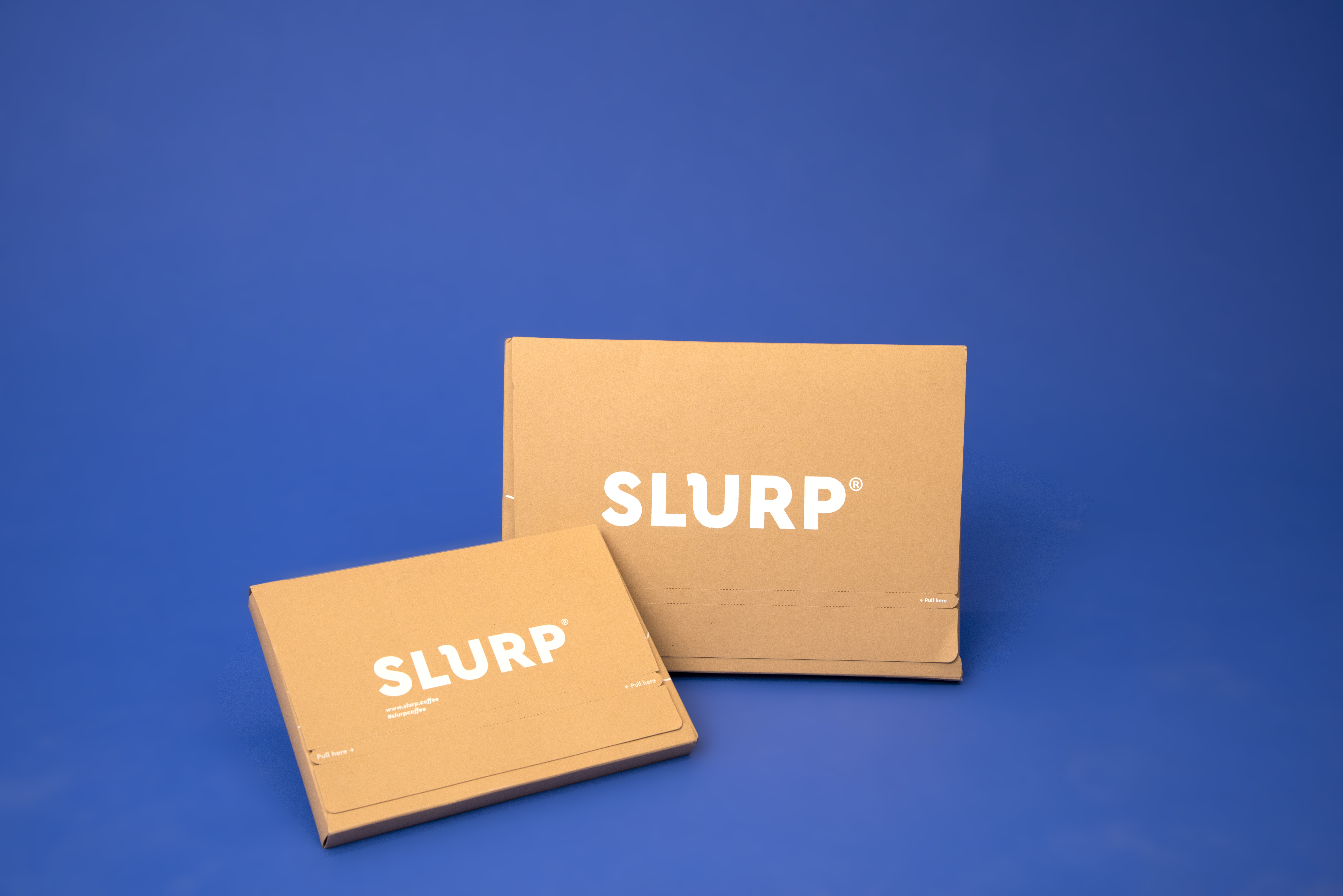
These envelopes here are designed to fit into your mail slot
Shipping envelopes
The design of the shipping envelope needs to fulfill the following requirements: it needs to stay under certain dimensions to flow through international logistics smoothly, it has to stay in shape and protect the product regardless of handling and still look good when arriving at destination.
We have achieved these goals for a long time using our specially designed shipping envelopes. The whole envelopes are made from one piece of thick kraft paper that can be recycled with other household paperboards. It is easily folded and sealed with a self-adhesive strip. The new design features an improved tear strip which makes opening the envelope easier than before.
What’s next?
We are working hard on improving all aspects of our service to best meet your needs and exceed your expectations. The packaging is a very visible part of us and therefore plays a big role in how we can communicate what we do, and more importantly, how we do it. We have already identified several small improvements (positioning of valve, instructions about opening the package etc.) that we can do to make the packaging even better to use. We are already in the process of making small adjustments and expect to see the revised packaging in use during the upcoming summer.
If you have any ideas on how we can improve the packaging further, no matter what it is, please send us a message at info@slurp.coffee or contact us here. We truly appreciate all feedback and read all messages carefully.
Thank you for your continued support!
The SLURP team
- Figure of different material energy requirements per volume. University of Cambridge, The ImpEE project 2006. http://www-g.eng.cam.ac.uk/impee/?section=topics&topic=RecyclePlastics
Comments (0)
Leave a reply
You must be logged in to post a comment.

